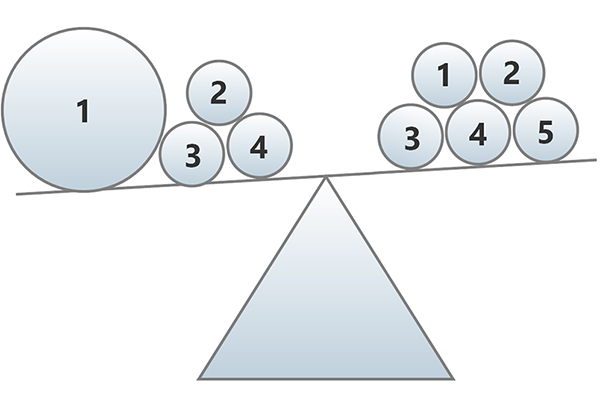Making Good Decisions - Decision Making Made Easy

Your good fortune relies on your ability to make the right decision.
Only if you make the right decision, will things go well.
But how can you ensure that you ARE making the right decision?
Use our Decision-Making-Apps
These Decision-Apps will help you to make the best decision, much more easily. Delegates who attend our courses say that these are the best decision making apps they've used!
Use these Decision-Apps to figure out your important decisions more methodically, logically and carefully. You can then print-off the decision and keep a written record of the result and how you made it.
These Decision-Apps are also very helpful when you need to make joint-decisions; when many people's differing opinions need to be carefully balanced.
There are different kinds of decision
Currently we have these Decision-Apps for you:
Yes or No? Decisions

Decisions that take the form: Should we or should be not do something? Yes or No?
Priority Order Decisions

Decisions that involve putting tasks into the correct order - What is the best use of my time?
Which One, What Kind? Decisions

Decisions that involve choosing between several options - Which candidate to employ? What kind of product to buy?
How to choose the best candidate?

Here is an effective way to organise your selection interviews. This app will help rank your candidates.
Let's Get Social
If you think a friend might enjoy this, please share it with them:
Drag this button: Making Good Decisions Web-Widgets to your bookmarks bar or desktop to save it for use later.
-
How to Overcome Procrastination
21 May 2024
Overcome procrastination with the Mind over Mood method: train the rational brain, adopt smart time-management habits and use a clear action plan to act today.
How to Overcome Procrastination
Procrastination is the habit of putting off what we know we should do because we're not in the mood to do it.
Procrastination is the opposite of good time management.
Time managers figure out what they should do and then they do it, even if they're not in the mood.
Procrastinators figure out what they...
Continue Reading >
-
Five Important Problem-Solving Questions
27 February 2024
Master problem solving with five questions: check facts, define the gap, write a plan, act on first steps, then repeat for ongoing improvement and results.
Five Important Problem-Solving Questions
Success requires that we solve problems. There are five questions that may be profitably applied to any situation, the answers to which will provide valuable information and help solve any problem.
Here are the five questions:
1. What are the facts, and how do we know?
The first thing to...
Continue Reading >
-
Unlocking the Power of First Principles
13 June 2023
Learn why first principles thinking beats shifting facts, helps you validate opinions, spark ideas and make better decisions that stay sound as the worldchanges
Unlocking the Power of First Principles: A Superior Approach to Validating Your Opinions over Facts
When it comes to substantiating our opinions, we frequently rely on either factual evidence or fundamental principles. Nonetheless, one of these approaches proves to be notably more impactful.
Let's delve deeper into this matter.
Rethinking the Reliability of Facts
Employing facts as a foundation for supporting your opinions may appe...
Continue Reading >
Customer Reviews
Here are a selection of reviews for our training courses.
The course content was good, informative, practical, with useful examples to add evidence to theory. The trainer’s presentation was clear and concise. I understood everything being presented. No questions needed to be asked which is rare!
Nikki MastersAsk Europe plc
Course Content Feedback
The content was well-structured, with a logical progression throughout.
Trainer's Presentation Feedback
The trainer was brilliant! Brought a lot of energy and enthusiasm.
One of the finest trainers I have seen.
Overall Rating
100/100
Sahol SheikhInformation Tech Consultants
The course content was extremely applicable to my job and life. It allows you to re-evaluate your thought processes. The trainer's presentation flowed and was systematic without being robotic and rigid. Was extremely clear, thorough and timely. I had a fantastic day.
Ben GledhillASDA













